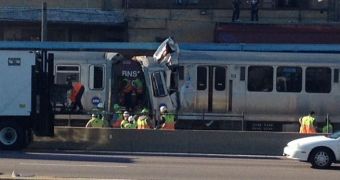Officials have concluded that a runaway train slammed into a parked one in a station near Chicago yesterday.
Initial reports mentioned that 48 people were taken to area hospitals after a collision in the Harlem stop in the Forest Park suburb.
More recent information puts the number of wounded at 33, and no passengers have suffered serious injuries.
There are still a lot of questions surrounding the incident, starting with how the train has gotten started in the first place.
"More and more it seems to be leaning towards a mechanical failure," Forest Park Mayor Anthony Calderone says in a press conference relayed by ABC News.
However, Amalgamated Transit Union President Robert Kelly argues that getting a train started is no easy feat.
"For it to move this morning, someone possibly keyed up the train. [...] I have never seen a train just start up and start moving – ever," Kelly explains.
"Mechanical malfunction… is easy to say but hard to explain," he adds.
More so, someone would not only have to acquire a key to the train to get it moving, but they would have to know how to use it.
"If it wasn't a goof or there is someone not telling us something that creates a big problem because if one train can start moving without anybody doing anything than it can happen to another train," Kelly comments.
The rogue train crashed on the "El" track while traveling at 20 mph, Chicago Transit Authority spokesman Brian Steele explains. According to Kelly, even if the train got started by accident, it would have automatically braked in instants, in the absence of a human controller.
A CTA supervisor noticed the train coming in for a crash and tried to climb up and talk to a mechanic.
"He pops the door open and walks on the platform to see where the train is going and tries to call it," Kelly says, as reported by CBS.
That is when the mechanic of the train trying to pull out of the station alerted passengers in the first car to move back and brace themselves.

 14 DAY TRIAL //
14 DAY TRIAL //